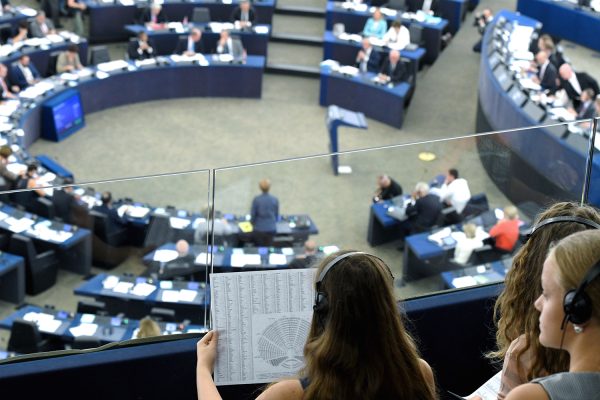
The European Commission published a white paper on Wednesday that sets out five possible futures for the European Union.
The scenarios range from muddling through to something resembling a federal Europe, with three options in between.
The fact that the EU executive recognizes that it would be misleading to boil the choice down to “more” or “less” Europe is itself a welcome change.
That doesn’t mean the five scenarios are all-encompassing. One could add an EU collapse on the one end and a United States of Europe on the other. But neither is likely to happen.
The five scenarios the commission has identified are all plausible and each come with their own pros and cons.
The five scenarios:
- Carrying On: Here the EU muddles through. There is incremental improvement in some areas and there are setbacks in others, specifically in regard to open borders. On the upside, this scenario is doable. It doesn’t require much political risk-taking. On the other, it is uninspiring and could mean the union slowly unravels.
- Nothing but the Single Market: Essentially a free-trade zone, except the freedom of movement for people may be impaired. Other areas, like cooperation on border security, counterterrorism and social policies, either stay with or are returned to the member states.
- Those Who Want More Do More: This is close to the two-speed Europe we’ve been writing about. As with the euro, which some countries have adopted and others have not, it is up to the member states if they want to integrate deeper, for example in the area of defense or internal security. The upside is that Euroskepticse might stop worrying that the present commitment to “ever-closer union” (which exists only on paper) will ultimately take us into a federal Europe. The risk is that some EU nations will be left in the cold. If Western Europeans team up on defense, for example, does that mean Eastern Europeans will have to fend for themselves?
- Doing Less More Efficiently: This is an interesting idea and the Dutch, for one, are keen on it: A European Union that does less, but does it well. For example, create a truly single market for telecom, but stay away from health care and jobs. The upside is that citizens would see the EU as concentrating on the areas where it really adds value, which — again — could take some of the wind out of the Euroskeptics’ sails. The risk is that countries won’t agree on which areas to prioritize.
- Doing Much More Together: If only. Federalists will like this, because it comes closest to their vision, but even the commission is aware of the risks: taking (too) much power away from the nation states is asking for a backlash.
Which vision is best?
My view is that Europe needs to find a balance between respecting national sovereignty and keeping the idea of “one Europe” alive.
That means a two-speed Europe — between a eurozone core and a non-euro periphery — is not the answer. It wouldn’t ease fears of a federal Europe in the core and it would leave peripheral member states feeling like second-class nations.
The better approach is somewhere between the commission’s options #3 and #4: accept that the EU doesn’t need to be involved in everything and allow countries to opt in and out of integration schemes, provided they aren’t crucial to the functioning of the single market.
Which vision will be implemented?
That may hinge on the outcome of the elections in the Netherlands, France and probably Italy this year. (The German election is unlikely to produce an upset.)
Assuming that Euroskeptics don’t come to power in either, we’ll probably move in the direction scenario #3, “Those Who Want More Do More”.
Countries like Hungary and Poland, which are governed by nationalists, wouldn’t allow a two-speed Europe and they definitively wouldn’t allow scenario #5.
Southern member states wouldn’t like a scenario #4, in which the EU abandons cultural and social programs they appreciate more than most.
Nobody in the mainstream wants to risk a scenario #2, in which Europe is reduced to a free-trade zone. Which leaves scenario #3 as the best alternative to the status quo.
